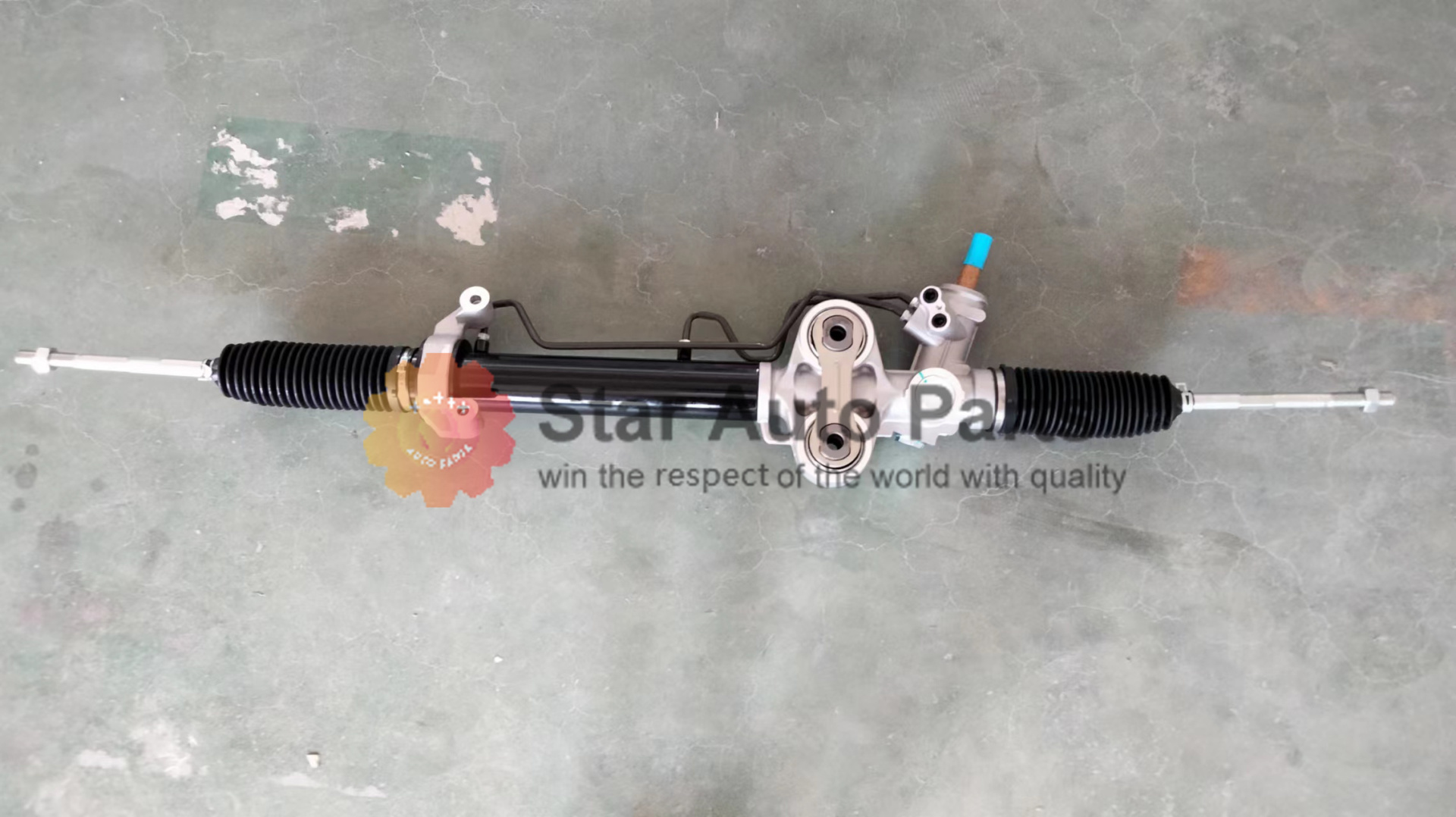News Center
What are the key performance parameters of automotive steering gears?
 The key performance parameters of automotive steering gears include the following:
The key performance parameters of automotive steering gears include the following:
Transmission efficiency:
Positive efficiency: refers to the power input from the steering shaft, through the steering rocker shaft output efficiency. The higher the positive efficiency, the lighter the driver turns the steering wheel, and the more labor-saving. For example, the positive efficiency of rack and pinion and recirculating ball steering gears is relatively high, while the positive efficiency of worm-gear finger-pin steering gears is relatively low.
Reverse efficiency:
Contrary to positive efficiency, it is the efficiency of power input from the steering rocker arm shaft and output through the steering shaft. The level of inverse efficiency affects the automatic return performance of the car after steering as well as the driver's “road sense”. Counter-efficient steering gear, such as rack and pinion and circulating ball steering gear, can ensure that the steering wheel and steering wheel after steering the car automatically back to the right, but in the uneven road driving, the impact of the wheels by the impact is easy to transfer to the steering wheel, resulting in the driver's “hit the hand”; and counter-efficient irreversible low steering gear, although it can avoid the The reversible steering gear with low efficiency, although it can avoid the phenomenon of “hand fighting”, but the steering wheel can not automatically return to the right, and the driver also lacks the road feeling.
Transmission ratio:
Steering system angle transmission ratio: refers to the steering wheel angle of the steering wheel and installed in the steering wheel on the same side of the steering wheel deflection angle of the ratio, which consists of the steering gear angle transmission ratio and steering transmission agency angle transmission ratio. The larger the angular transmission ratio, the steering torque required to overcome a certain ground steering resistance on the steering wheel will be smaller, so that the steering maneuver is light, but at the same time will also lead to steering maneuvering is not sensitive enough, that is, the steering wheel to turn the number of turns to increase.
Steering gear angle ratio:
is the steering wheel angle and steering arm swing angle ratio. Different types of vehicles, the steering gear angle ratio is different, trucks steering gear angle ratio of about 16 ~ 32, cars about 12 ~ 22. Increase the steering gear angle ratio, can increase the force transmission ratio, thus reducing the role of the steering wheel on the hand force, so that the operation is more convenient, but also will make the steering wheel deflection angular velocity of the steering wheel angular velocity of the response to the steering wheel has become sluggish, reducing the sensitivity of steering.
Angular transmission ratio of steering gear: it refers to the ratio between the swing angle of the steering rocker arm and the deflection angle of the steering wheel on the same side, which is generally about 1.
The total number of steering wheel turns: the total number of turns the steering wheel has made from the limit position of one side to the limit position of the other side. The larger the value is, the larger the steering coefficient is, and the more energy-saving the maneuvering is in relative terms, but the sensitivity of steering will be reduced. General sedan steering wheel to turn the total number of turns in the 2.5 ~ 3.5 between the total number of turns of the sports car is less to facilitate control; SUV car due to the body weight is larger, the total number of turns of the steering wheel is relatively more in order to save the operating force.
Minimum steering radius:
This refers to the distance from the steering center to the contact point between the outer steering wheel and the ground when the outer steering wheel deflection angle reaches the maximum value when the car is steering. The smaller the minimum steering radius, the smaller the field required to steer the car, the better the maneuverability. The steering angle of the inner wheels of the car is generally between 35° and 42°, and the minimum turning radius of the car is generally about 5 to 12m.
Steering wheel free travel:
it refers to the angular travel of the steering wheel in the idling stage, which is mainly caused by the assembly clearance and elastic deformation between the transmission parts of the steering system. General requirements of the steering wheel free travel is less than 10 ° or 10 ~ 15 mm. free travel for the relief of road impact and to avoid excessive tension on the part of the driver is favorable, but should not be too large, so as not to affect the sensitivity of the steering system.
Keywords:
News Center
What are the key performance parameters of automotive steering gears?
Time of issue : 2024-12-26 11:49:04
How do I choose the right auto steering gear for my vehicle type and use?
Time of issue : 2024-09-30 17:21:36
How to address the technological challenges facing the automotive steering industry?
Time of issue : 2024-09-10 11:59:10
What are the future development trends of the automotive steering industry driven by policies?
Time of issue : 2024-08-21 10:29:36
About Us
SAF Coolest v1.3.1.2 设置面板 GAGSE-ZGYF-JDSSE-ZAE
无数据提示
Sorry, the current column is being updated, please look forward to it!
You can view other columns or return to theHomepage





